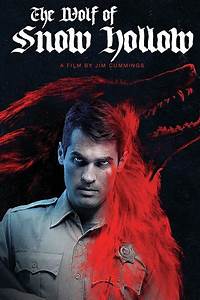(a.k.a.
NIGHT OF THE DARK FULL MOON; a.k.a. DEATH HOUSE; a.k.a. DEATHOUSE.
Director/co-screenwriter: Theodore Gershuny. Co-screenwriters: Jeffrey Konvitz
and Ira Teller.)
Review
Christmas
Eve Day, 1950, East Willard, Massachusetts. An old man, Wilfred Butler, dies
after running out of his massive house while fire engulfs him. His will
dictates that the mansion be used as an asylum.
Christmas
Eve Day, 1970. The mansion-turned-asylum is empty. Lawyer John Carter and his
assistant/mistress, Ingrid, show up on Christmas Eve from out of town to
collect the money the townspeople are offering his client (Jeffrey Butler,
grandson of Wilfred) for the giant house. The town council, secretive and
suspicious, tersely agree to get Jeffrey’s money the next day. The lawyer and
his assistant spend the night in the mansion, unaware that a black-gloved,
Bible-reading killer─whose progress we sometimes see via Killer POV and strange
angles─is in the house. When they repair to bed, the killer attacks them with
an axe. Quick closeup cuts of cherry syrup-looking blood, stained sheets, and
clutching hands are shown. The whispery killer, identifying himself as "Marianne," calls Sheriff Bill Mason and tells him to investigate
the mansion. The switchboard operator
(Tess Howard), hearing this, panics.
Later
that night, Jeffrey Butler (James Patterson) arrives in town and meets Diane
Adams (Mary Woronov), the mayor’s daughter. They become fast friends. More
murders occur. More phone calls are made by Marianne, one to Diane: “Tell them
I have the diary─1935,” the killer says. This inspires Diane to delve further
into the mysterious, tragic and deadly history of the Butler family.
Filmed
in Oyster Bay, Long Island, New York in 1970, but not released until 1972, two
years before BLACK CHRISTMAS, SILENT features the Killer POV
shots and whispery killer phone call elements that BLACK popularized. Like
BLACK, it is atmospheric with dark tones, visually and thematically,
with a compelling mystery and a few twists─although SILENT’s is more
explicitly resolved than BLACK’s.
If SILENT
is not good as BLACK, it’s close. Its cinematography (courtesy of Adam Giffard) is appropriately dark, grimy, and wintry. Gershon Kingsley’s score is
striking in parts and contributes to the overall miasmic mood, while Tom Kennedy, Charles Baum and Jonathan Kroll’s editing─which occasionally verges on artsy─furthers SILENT’s
weird Christmas hell vibe. This makes sense, considering that several
former Andy Warhol players and crew members worked on SILENT: Mary
Woronov (WARLOCK, 1989); Candy Darling (her final film); Ondine; Tally Brown; and others. Woronov was married to director/co-screenwriter Geshuny at
the time.
Other
notable actor appeared in this film─John Carradine (THE HOWLING, 1981)
as Charlie Towman, mute owner of the town newspaper, and Patrick O’Neal (THE STEPFORD WIVES, 1975) as John Carter.
If
you’re okay with a notably flawed film with an intense, grim, and sometimes
oddball-artsy mood, you might enjoy SILENT, a public domain/uncopyrighted
work. Its offbeat pacing may make it confusing for some viewers. This is not
surprising─one of the screenwriters, Jeffrey Konvitz, is known for laying on
thick, effective atmosphere with a touch of strangeness; he wrote the 1974
novel THE SENTINEL, and later co-produced the resulting 1977 film as
well.
A
remake, SILENT NIGHT, BLOODY NIGHT: THE HOMECOMING, was released in
2013, followed by a 2015 sequel, SILENT NIGHT, BLOODY NIGHT 2: REVIVAL.
Mary Woronov, according to IMDb, is appearing in the third film, tentatively
titled SILENT NIGHT, BLOODY NIGHT PART 3.





